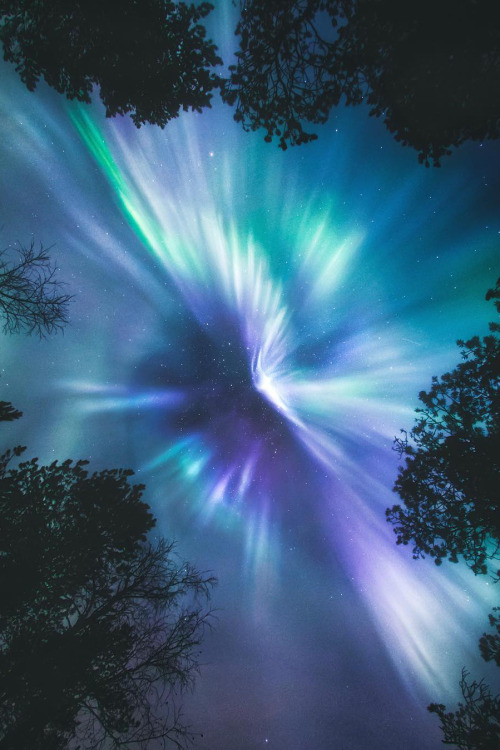This Is One Of The Largest And Most Prolific Star-forming Regions Near Our Milky Way. Located About 160,000

This is one of the largest and most prolific star-forming regions near our Milky Way. Located about 160,000 light years away in the neighboring Large Magellanic Cloud galaxy, the Tarantula nebula is sculpted by searing radiation and strong winds that comes from the massive stars at its center. If fact, it is estimated that at least 40 of these huge stars have gone supernova within the last 10,000 years including the most recent one, SN 1987a. (Composite Image from Multiple Data Sources. Hubble Space Telescope, ESO, Amateur Data. Image Assembly and Processing : Robert Gendler and Roberto Colombari)
More Posts from Porcelainrobot and Others

Emäsalo // Juuso Hämäläinen

Hapuna Beach // Bejamin

Haunted House




Jupiter’s Galilean Moons
Io - Jupiter’s volcanic moon
Europa - Jupiter’s icy moon
Ganymede - Jupiter’s (and the solar system’s) largest moon
Callisto - Jupiter’s heavily cratered moon
Made using: Celestia, Screen2Gif & GIMP Based on: @spaceplasma‘s solar system gifs Profile sources: http://solarsystem.nasa.gov/planets, http://nssdc.gsfc.nasa.gov/planetary/factsheet/joviansatfact.html




Björk|Debut (1993)

Space View by (Caras Ionut)



-
 thomasbrisenio reblogged this · 2 years ago
thomasbrisenio reblogged this · 2 years ago -
 liho907lilo reblogged this · 2 years ago
liho907lilo reblogged this · 2 years ago -
 sicu-me liked this · 3 years ago
sicu-me liked this · 3 years ago -
 marialeecollectorfan reblogged this · 4 years ago
marialeecollectorfan reblogged this · 4 years ago -
 sanwerfit liked this · 5 years ago
sanwerfit liked this · 5 years ago -
 cummingcourtesy reblogged this · 5 years ago
cummingcourtesy reblogged this · 5 years ago -
 pinner99 liked this · 5 years ago
pinner99 liked this · 5 years ago -
 wegonbeaight reblogged this · 5 years ago
wegonbeaight reblogged this · 5 years ago -
 benjidarkness liked this · 5 years ago
benjidarkness liked this · 5 years ago -
 mikeys-zen reblogged this · 5 years ago
mikeys-zen reblogged this · 5 years ago -
 xnzda reblogged this · 5 years ago
xnzda reblogged this · 5 years ago -
 tardigrade666 liked this · 6 years ago
tardigrade666 liked this · 6 years ago -
 renaissance-goblin reblogged this · 6 years ago
renaissance-goblin reblogged this · 6 years ago -
 cinturon-cadena liked this · 6 years ago
cinturon-cadena liked this · 6 years ago -
 stupidly-curious-at-best liked this · 6 years ago
stupidly-curious-at-best liked this · 6 years ago -
 tetsuroukuroosbitch liked this · 6 years ago
tetsuroukuroosbitch liked this · 6 years ago -
 utenanthy reblogged this · 6 years ago
utenanthy reblogged this · 6 years ago -
 bouquetlovelove liked this · 6 years ago
bouquetlovelove liked this · 6 years ago -
 starlifter17 liked this · 6 years ago
starlifter17 liked this · 6 years ago -
 utenanthy liked this · 6 years ago
utenanthy liked this · 6 years ago -
 glitterkaiju liked this · 6 years ago
glitterkaiju liked this · 6 years ago -
 edy-bastos liked this · 6 years ago
edy-bastos liked this · 6 years ago -
 godith024 liked this · 6 years ago
godith024 liked this · 6 years ago -
 powersnuffgirls liked this · 6 years ago
powersnuffgirls liked this · 6 years ago -
 blaajablast liked this · 6 years ago
blaajablast liked this · 6 years ago -
 hellanathalie liked this · 6 years ago
hellanathalie liked this · 6 years ago -
 diosita-de-la-lluvia liked this · 6 years ago
diosita-de-la-lluvia liked this · 6 years ago -
 eyzotic reblogged this · 6 years ago
eyzotic reblogged this · 6 years ago -
 genocider-syo-is-still-my-queen liked this · 6 years ago
genocider-syo-is-still-my-queen liked this · 6 years ago -
 byron4night liked this · 6 years ago
byron4night liked this · 6 years ago -
 iamzeeladee reblogged this · 6 years ago
iamzeeladee reblogged this · 6 years ago -
 iamzeeladee liked this · 6 years ago
iamzeeladee liked this · 6 years ago -
 daemondamian liked this · 6 years ago
daemondamian liked this · 6 years ago -
 tess-dirtylaundry reblogged this · 6 years ago
tess-dirtylaundry reblogged this · 6 years ago -
 tess-dirtylaundry liked this · 6 years ago
tess-dirtylaundry liked this · 6 years ago -
 peroxidebutch liked this · 6 years ago
peroxidebutch liked this · 6 years ago -
 king-of-the-rain-and-wolves liked this · 6 years ago
king-of-the-rain-and-wolves liked this · 6 years ago
